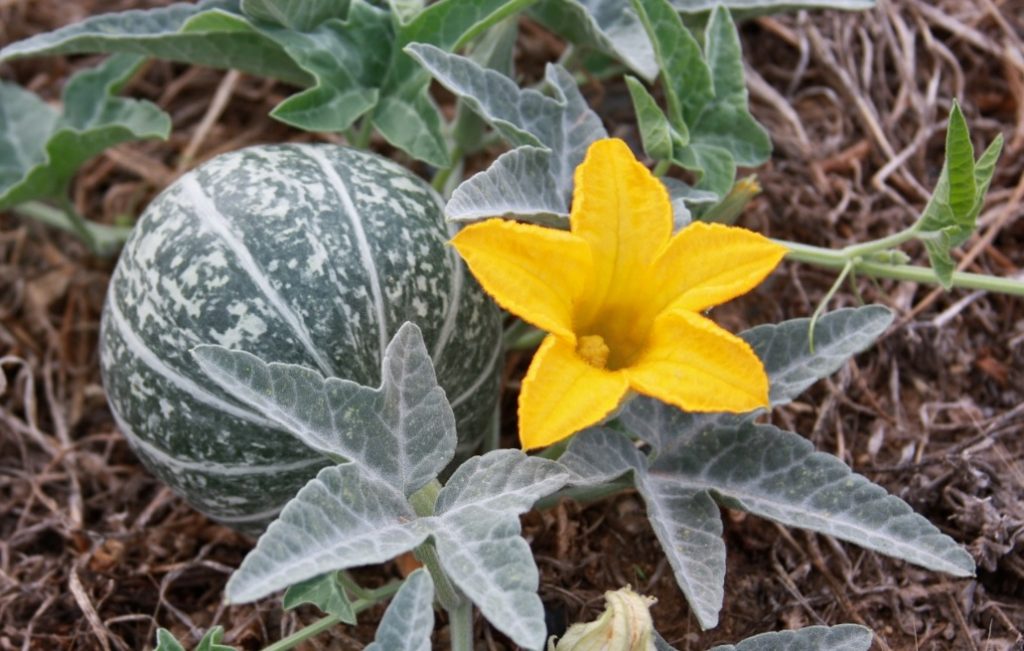
Coyote Gourd – A Handsome Groundcover
September 20, 2017Three weeks after the onset of the summer rains, in a wash southeast of the Huachuca mountains, the coyote gourds grow. Mexico is less than two miles away. The air is filled with the sounds of birds.
Since the first rains, numerous tuberous perennials (plants of diverse origins that have fleshy storage roots, appearing only during the rainy season, usually summer) have made rapid growth, many are already blooming and some are in fruit. Orange-flowered wild beans (Macroptilium gibbosifolium) grow along the banks of the wash. On the nearby uplands, Bush Morning Glories are beginning to bloom. Their huge trumpet-shaped white flowers with magenta throats open in the evening and close early in the morning. The grasses are lush and myriads of seedlings are popping up everywhere.
Until just before the summer rains begin, the Coyote Gourd sleeps underground as a sausage-shaped tuberous root that makes tentative growth of many fine stems. When rain comes, growth explodes. The largest plants measure forty feet across and spread like giant green spider webs across the sand and grasses, and climb into the shrubs and trees. First come the squash-like, yellow flowers, paradise to pollinators large and small. The baseball-sized fruits hanging from the trees begin as green spheres with silvery green stripes, ripening to yellow, looking like someone has put out the Christmas ornaments early.
Cucurbita digitata grows along washes and in other disturbed areas and its range extends from southeastern California to southern New Mexico and south into Sonora from sea level to about 5,000 feet.
As a member of the genus Curcurbita, Coyote Gourd is closely related to other gourds (C. cylindrata, C. cordata, C. palmata) that range southward into Baja California. Some experts believe that these relatives are so close that they are really one single, highly variable species. Cucurbita digitata is also related to the domesticated squashes and pumpkins. Unlike its domesticated cousins, coyote gourd is inedible except for its seeds. The bitter, toxic pulp has been used to make soap and dried gourds have traditionally been used as rattles or to make cups and bowls.
The Coyote Gourd plants are quite attractive with their dark green and silver hand-shaped leaves — they appear to wave “Hey y’all” when the wind blows — and make a handsome groundcover or vine in the landscape.
